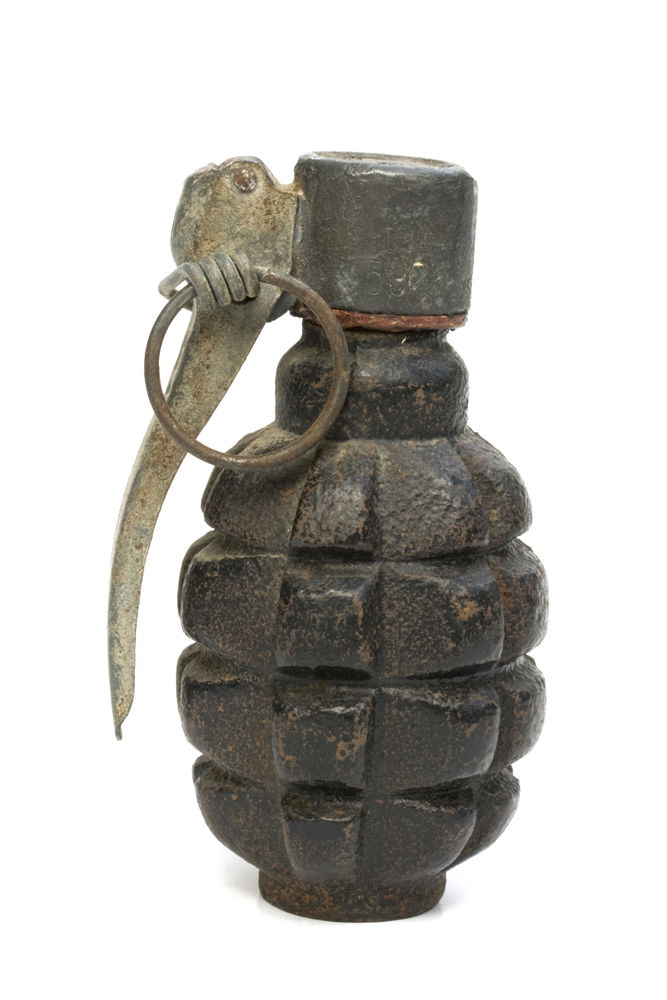10 maintenance tasks to do yourself
New to biking? Getting hands-on with your motorcycle may be easier than you think

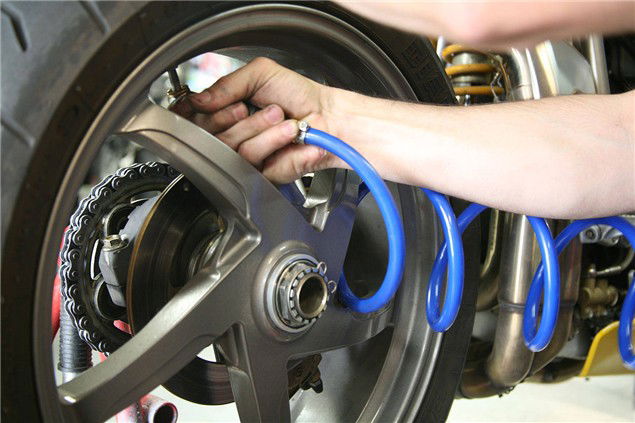
YOU DON'T have to have the mechanical know-how of a MotoGP technician to perform simple home-servicing tasks; some decent tools and a little common sense are all you need to keep your bike in tip-top shape.
Ideally, get hold of a workshop manual for your machine for a better understanding of how each task should be carried out. Most will give pictures detailing each part of the process; a good manual will also list the tools you'll need to complete the job. Find yours here.
Tools are like knives to a chef; using good ones is half the battle. Save the under-seat tool-kit for roadside emergencies and invest in quality for home maintenance.
If you're lacking mechanical confidence, ask someone more experienced to help.
1. TYRES
When was the last time you checked your bike's tyre pressures? It should be done weekly, but many of us forget or don't bother with what is a crucial element of bike set-up.
Under-inflated tyres affect handling and braking, as the lack of pressure means the tyre wall isn't firm enough to properly cope with the forces on it. Over-inflation can reduce the size of the contact patch on the road, affecting grip.
Use a quality pressure gauge to accurately check the pressures. Consult the manual for the correct pressures. Remember, your tyres may need more pressure if you regularly ride with a pillion passenger. Always check pressures when the tyres are cold.
While you're at it, check the overall condition and tread depth.
2. Chain tension
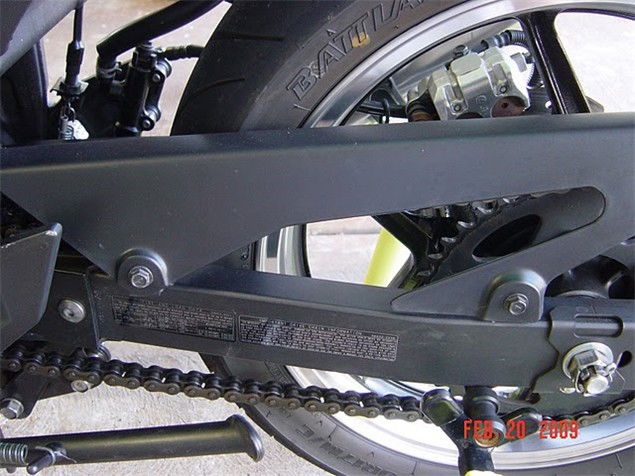
INCORRECT chain tension can make for premature sprocket and gearbox wear, rough gear-shifts and snatchy transmission. It can also reduce rear suspension travel and limit the life of the drivechain.
Check your workshop manual for how to adjust your bike's chain to the correct tension. Remember to set the tension with some load on the bike (preferably with someone on it) as the chain will tighten up once a rider's on-board.
Refere to the owner's manual for the correct torque settings for each bolt - that's how much force to use when retightening. You'll need a good torque wrench to do this properly.
Remember to also lubricate the chain while you're at it, as this will prolong its life.
Check this video for a detailed explanation.
3. Battery
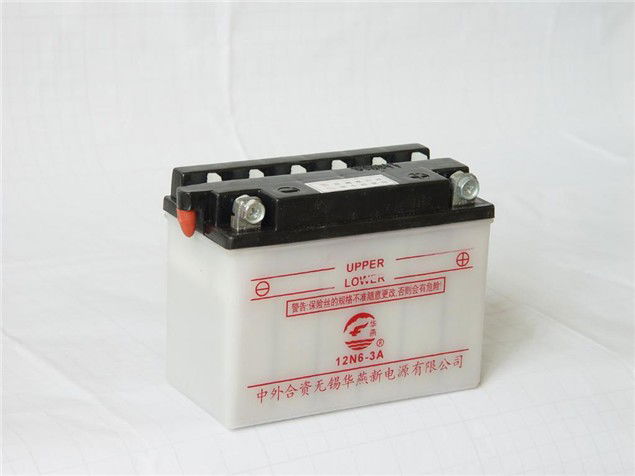
MOST BATTERIES are situated beneath a bike's seat or petrol tank, so it's hardly surprising many get overlooked when it comes to routine maintenance.
When a battery becomes very discharged, it usually means the end of its life, so routine checks should be made on its condition.
Ideally, remove the battery from its holder before carrying out any work. Remember, batteries contain strong acid, which can be harmful if it comes into contact with your skin.
Check the acid level in your battery by placing it on a level surface. If the level's low then top up with de-ionised water before placing the battery on charge, using a car or motorcycle charger. Remember not to overfill, as acid will drain out the overflow pipe when you're on the move. Many moden batteries are sealed, so you won't be able to top them up.
Greasing your battery terminals before replacing it in the bike will help avoid corrosion. Just remember not to touch both terminals at the same time.
4. Coolant
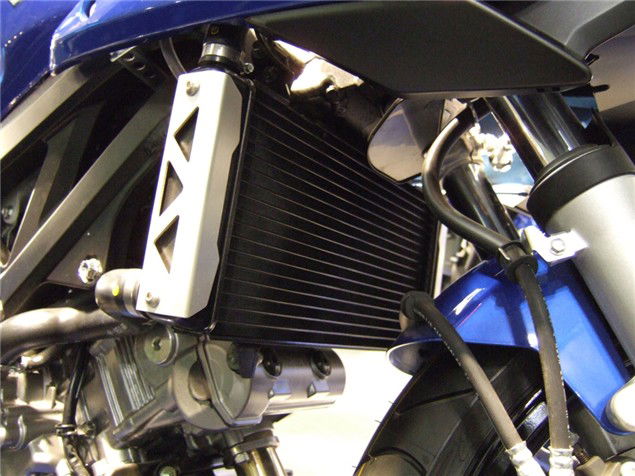
DO YOU know how to check your bike's coolant level?
It's another task that's often neglected but only takes a few minutes.
Check your owner's manual to locate your bike's coolant expansion tank if it has one. High and low levels should be marked on the outside of the translucent tank. Alternatively, remove the radiator filler cap to check the level. Only do this when the engine is cold.
Changing the coolant altogether is also an easy job, taking about 30 minutes.
Locate the drain plug. It may be situated near the water pump. With the engine stone cold, remove it to drain the coolant. Always check the owner's manual to ensure you're following the correct procedure for your bike.
Once the system's drained, replace the drain plug before making up a new batch of coolant using a 50/50 mix of anti-freeze and de-ionised water.
Fill to the recommended level and squeeze radiator hoses to expel unwanted air.
Check the level again after your first test ride and top up if necessary.
5. Oil and filter change
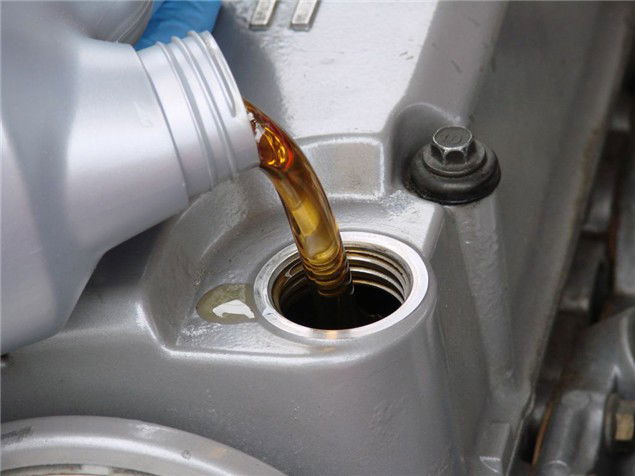
CHANGING YOUR bike's oil and filter isn't a great deal more difficult than refreshing the coolant system; all you need are the right tools, decent oil and the correct filter.
Check your workshop manual for a detailed explanation of the steps before going ahead. As with any first attempt, consider asking someone more experienced to oversee progress from start to finish.
With the engine warm, remove the bike's oil filler cap, place a tray under the bike and remove the sump plug. Make sure you're 100% sure you're removing the right bolt; it should be the biggest one on the sump, usually on the bottom or on the side.
Once the oil's drained, remove the filter, either by hand if you're built like Desperate Dan or using a filter removal wrench.
Replace the sump plug and tighten to the correct torque setting as recommended in the owner's manual before spinning on a new filter. Smear the rubber filter gasket in clean oil before tightening by hand. Nip it up half a turn with the filter wrench.
Refill the engine with the recommended amount of new oil. Start the bike, check for leaks and stop the engine again. Give it five minutes for the oil to drain back into the sump before checking the level again.
Add oil if necessary or remove some with an oil syringe.
Simples.
6. Oil and adjust cables
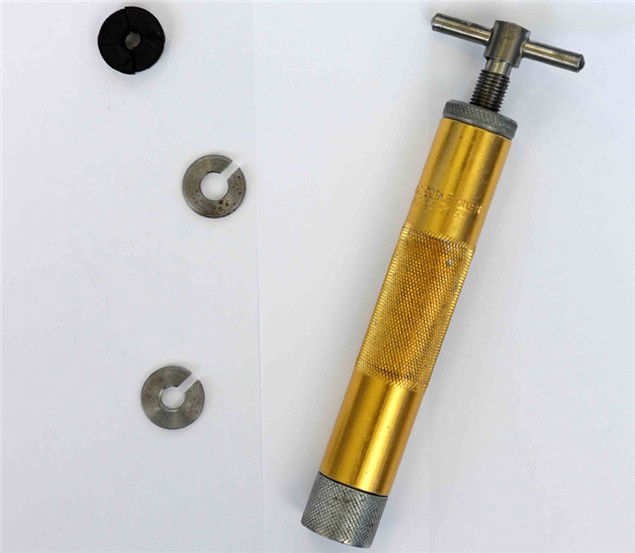
Hydraulic oiler - around £20
OILING AND ADUSTING your bike's cables can make for a smoother, more responsive riding experience.
Over time, the grease put into the cable housing during the manufacturing process will degrade, leaving your bike's throttle or clutch action impaired.
So it's worth splashing out around £20 for a dedicated hydraulic cable oiler.
Check the video for how to use the oiler.
While oiling your cables, adjust them to take out any unwanted slack. This will give a better response.
7. Spark plugs

CHANGING your bike's spark plugs isn't a job that usually needs doing regularly. Check youre mileage and the owner's manual to see whether it's due.
Changing the plugs on some bikes takes a matter of minutes, while others can take a novice several hours and require the removal of the radiator. Got a V4 Honda? Consult your local dealer, as it can involve draining the cooling system.
Make sure you have the correct plugs for your bike; the code number on each one will differ from manufacturer to manufacturer. Check the owner's manual for the correct gap; you'll need feeler gauges to set it correctly.
Remove one plug at a time to avoid mixing up the HT leads. Carefully avoid overtightening them. Screw in by hand and nip them up a quarter-turn with a plug wrench.
8. Grease
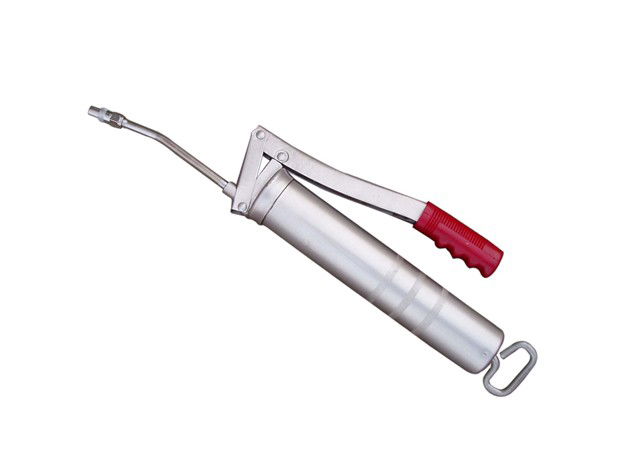
YOUR BIKE will benefit from a squirt of the right sort of grease in the right places.
Work your way around the bike with spray grease, lubricating foot-rests, hinges, levers, locks, stand hinges and, as we've mentioned previously, cables. Just be careful you don't spray anywhere near brakes.
If you're feeling a little more adventurous, you may want to try greasing other parts of the bike, like the wheel spindles or swingarm, for instance. Check the workshop manual for the location of any greasing points.
If you've really got the bug, invest in a tin of copper grease, so you can remove non-structural bolts on your machine (like brake caliper bolts) and then apply a bit of grease to prevent them seizing up over time. Just remember to tighten them to the correct torque setting.
Not sure which sort of grease to use for each job? Consult your local dealer or accessory shop for best advice.
9. Brake pads
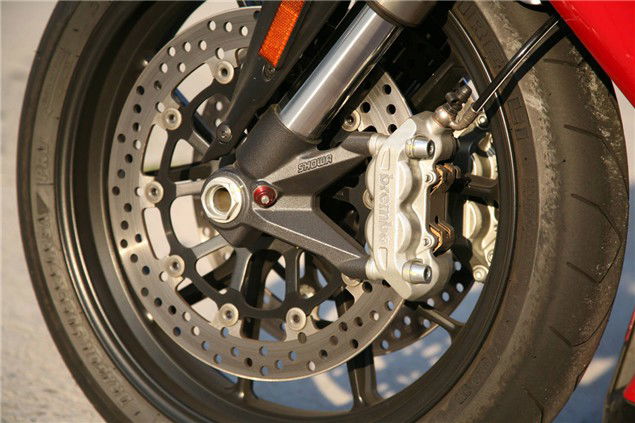
REPLACING your brake pads sounds fairly intensive but is actually a straightforward job. That said, there are clear safety implications of getting it wrong, so seek guidance from someone more experienced if you're unsure.
Obviously, a workshop manual, the right tools and the correct pads are a starting point.
Some calipers let you replace pads without removing the caliper itself from the disc. Instead you access the pads by removing a plate on the back of the caliper and then a retaining pin through the pads.
The pistons will probably have to be carefully pushed back into the calipers to make space for the new, unworn pads. If you can't do it with your fingers, use a pair of needle nose pliars, with the opposing jaws on opposing pistons. Don't use the pliars between piston and disc, as this will damage the disc. With the pistons pushed back sufficiently, the new pads should slot easily into place and the retaining pin and plate can be replaced.
Sliding calipers usually have to be removed from the disc by undoing the bolts attaching the caliper to the fork leg. Once off, the jaws of the caliper will have to be eased apart and a retaining clip removed to release the pads. Again, pistons may have to be pushed back to accommodate the new pads. Consult the owners manual for torque settings and use a torque wrench when refitting.
In either case, by pushing the pistons back you are likely to have left some space between them and the new pads. Before riding, pump the lever to close it and push the pads up to the disc. If you don't do this, the next time you use your brakes the lever will come all the way to the handlebar without applying any braking pressure on the disc. And that's bad.
In any event, completely satisfy yourself the brakes are working correctly before going anywhere.
Do one side at a time if you have a two-caliper set up at the front.
Check this video about removing the caliper and pads and another about replacing them.
Here's one showing pads being swapped with the caliper in place.
10. Clean it
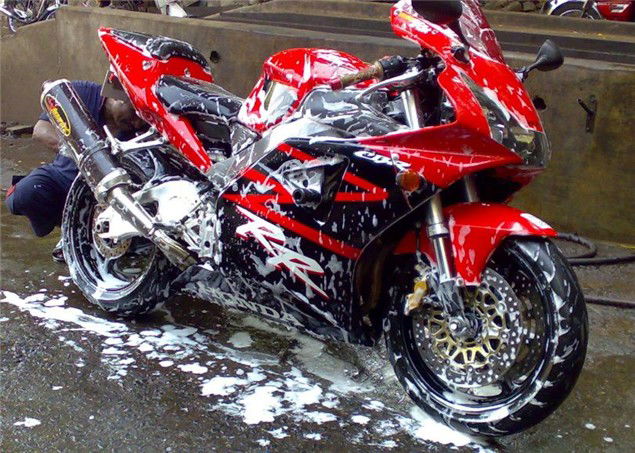
UNLESS YOU'RE a commuter and don't have time, washing your bike after every use is the best way to keep that as-new look, especially in winter, when corrosive salt is on the roads. Cleaning your bike thoroughly on a regular basis also gives you the best chance to spot anything mechanically amiss.
Soap the bike down with plenty of hot water, laced with a decent quality bike shampoo. Do not use washing-up liquid as it can be corrosive.
With some bike cleaning solutions, the recommendation is to rinse the bike with water before spraying the cleaner on and leaving it for a few minutes.
Then take a clean sponge or dish cloth and warm water to the whole bike. Do bodywork and screen first, to avoid scratches from grit picked up by the cloth or sponge.
It sounds tiresome but with an effective cleaning agent like Muc-Off or SDoc100 the dirt drops off.
For the chain, use a dedicated chain cleaner. Again, a good one like Activ8 will make light work of it.
Rinse off with plenty of fresh water. Avoid bearings and electrics if using a pressure washer.
Apply a liberal dousing of anti-corrosion spray, like Scottoil FS365, to keep corrosion at bay in winter.
Article first published on November 22, 2010.

